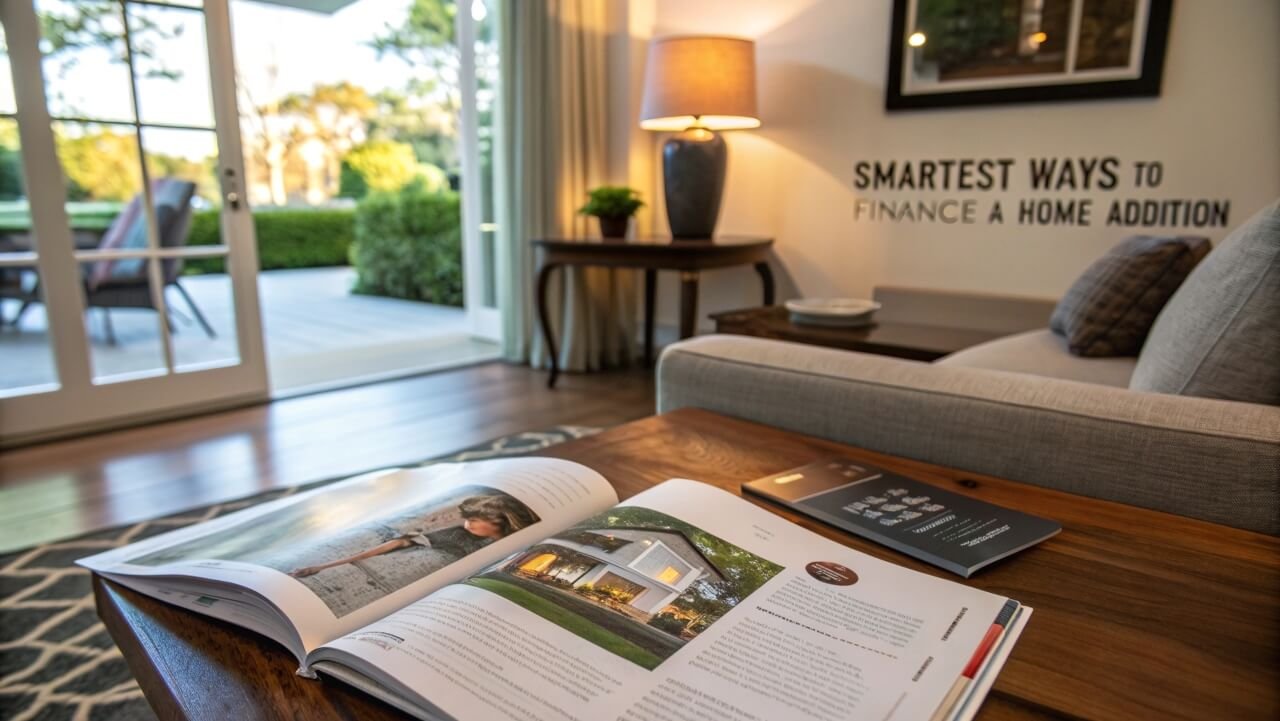There is a classic dilemma in many homeowner’s lives: the desire for the neighbourhood, a good garden, and a good school for his kids, while there is some real space constraint. Moving is out of the question; however, those walls seem to be compressing gradually. What if you could get that extra space without lifting a single box? Hence, a home addition might be the best choice to go for, as it gives you more living area while staying in the house you love.
Adding a new room, a second storey, or creating an expansive primary suite is something that excites homeowners – except for the one huge question: how does one pay for it? The actual journey of financing can appear perplexing, almost as perplexing as the construction work itself, but it really need not be so. Understanding your options is the first step in taking the intelligent route and making a confident decision all aligned with your financial goals. Let us go through some of the best financing options available for the next chapter of your home.
Envisioning Your New Space: More Than Just Square Footage
Before crunching the numbers, you want to get a clear vision for your project. Are you aiming for a functional home office, an extremely sunny family room, or a private hangout? It is life enhancement up for discussion here and not just some square footage.
Any place can serve as inspiration to a great designer; to really add that splash of luxury, most look to the flawless interiors of great suites. Imagine those open, airy layouts of world-class penthouse suites, with some of the finest spa-like bathrooms, and your simple idea will elevate from a room to an address within your own home. This vision will be the architect’s guideline and motivation to keep you going through the project by reminding you of the crazily increased value and sheer joy the finished space will bring to your life.
Setting clear, ambitious goals helps you create a realistic budget, which is basically the basis for any financing strategy. Knowing whether you need $75,000 or $250,000 immediately limits your options and shows you the proper financial product.
Dip into Your Home’s Equity: The Most Common Route
For most established homeowners, your most potent financial tool is sitting right there within those walls: your home’s equity. Equity represents the difference between the market value of your home and the unfixed mortgage balance left on the house. Your equity increases as you pay down your mortgage and as property value rises, making it a fund you can borrow against. Essentially, there are two methods of leveraging this for a home addition.
A cash-out refinance is simply a situation where you are swapping an old mortgage for a new one that is bigger in size. You get to pocket the difference as a sum of money. This is very advantageous when the interest rates prevailing today are lower than your original one’s rate, as you might be able to get a better interest rate on your entire mortgage and not just on the additional part. Single payments are easier for one to bear, and a fixed interest rate will help him with presenting a flat budget. The downside, however, is that you will be refinancing your whole mortgage balance, and there are closing costs to be paid on these loans, just like there were back when you first bought your home.
On the other hand, the HELOC functions more like a credit card. Rather than receiving a big lump sum amount at the start, you are given a credit limit from which you may draw as much as needed during the draw period. This dynamic arrangement is perfect for large projects with potentially varying costs. You are only paying interest on what you borrow, and usually, the interest rates are variable. A HELOC is a second mortgage in that your new payments will now compete with your old ones, but funds can target your needs best in an efficient way without tarnishing your first mortgage’s really low interest rate.
Loans Designed for Building: When Equity Isn’t Enough

If you’ve been newly owning your home, so there isn’t much equity accumulated to finance the project, or it is a very big project with equity not quite enough to cover the full cost, a construction loan may be your option. These products are necessarily geared towards the building scenario, where funds are released in stages depending on the completion of work.
A construction loan is a short-term loan to fund construction. A lender will coordinate with your builder to organise a draw schedule with releases happening at key milestones like foundation, framing, and drywall; this process ensures that work is being done as programmed before more money goes out. When the construction loan ends, it normally reverts to a standard mortgage. It’s one of the best ways to control vast home renovations and additions in that it’s built around the construction phase.
Where qualified, FHA 203(k) is quite a strong option. Being a government-insured loan, it allows you to essentially include your cost of renovations within the mortgage. It’s for situations where the intent is to purchase a house requiring work or when refinancing to provide an upgrade. It’s a single loan and a single closing, simplifying the process and making significant remodels accessible even to buyers with a lower down payment.
Building Your Future, One Smart Decision at a Time
The way to go with financing features is termed ‘geared’, especially to your personal needs. Your credit score, your home’s value, the size of the project, and how much you want to pay each month down the road. The best way of paying for your addition will be the one which does not drain you financially but facilitates your plans. Being able to carry on with whatever means you consider, with a little insight and knowing your options or working with someone reputable in the mortgage world, will definitely push your dream of more space to a pretty squeezed-down reality.
